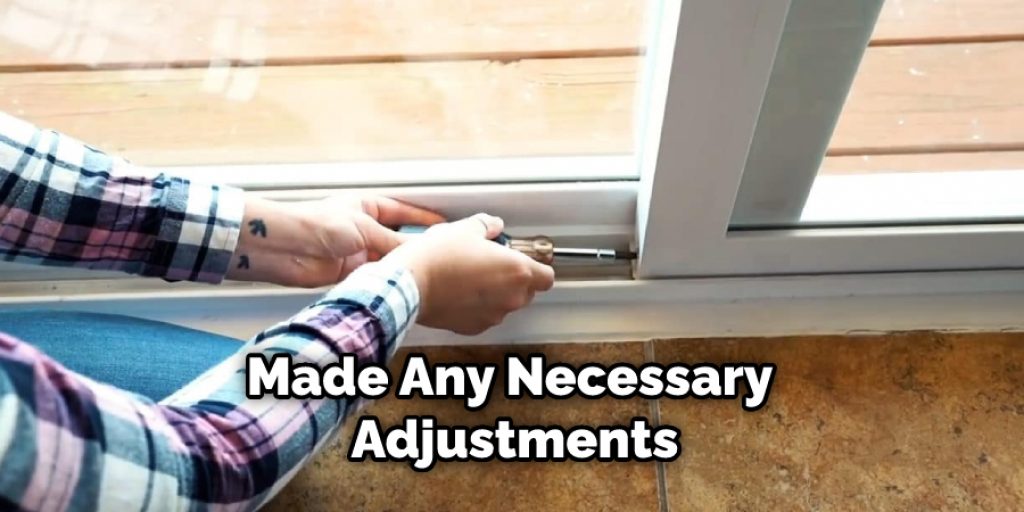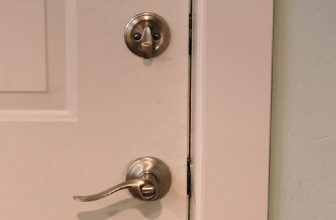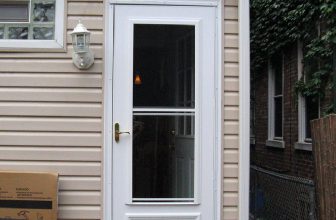How to Insulate Sliding Glass Doors
Are you looking for a way to keep your home more energy efficient and secure? Sliding glass doors can be an excellent source of natural light, but they are also notorious for increasing heating and cooling costs. When it comes to saving energy at home, one of the best investments you can make is in insulating your sliding glass doors. Not only does this help save money on heating and cooling costs, but it also creates a more comfortable living environment for you and your family year-round.

Fortunately, insulating sliding glass doors is not difficult – all it takes is the right materials and knowledge. If you’re ready to tackle the project head-on, then this blog post will guide you through the process step-by-step and provide tips on how to achieve maximum results with minimal effort. Read on to discover how easy it is to transform your drafty sliding door into an energy-saving asset that provides lasting protection from air infiltration! In this comprehensive guide, we’ll cover all the steps needed on how to insulate sliding glass doors from start to finish – so by the time you finish reading, you’ll be ready to take action!
What is Insulating?
Insulating sliding glass doors is the process of adding a barrier between the interior and exterior of your home to prevent air infiltration. This can be done with a variety of materials, such as insulation panels, weatherstripping tape, or even foam board. By installing these energy-efficient products in your door frame, you are able to reduce heat transfer and keep your home’s temperature more consistent throughout the year.
What Materials Do You Need to Insulate Sliding Glass Doors?
The materials you will need to insulate sliding glass doors depend on what type of insulation you are using. If you decide to use foam board, the materials you will need include the following:
- Foam board panels
- A utility knife
- Tape measure
- A caulking gun
If you decide to use weatherstripping tape, the materials you need are:
- Weatherstripping tape
- A utility knife
- A caulking gun
Finally, if you choose to use insulation panels, then the materials you will need include the following:
- Insulation panels
- Adhesive spray glue or heavy duty double sided tape
- A caulking gun
The Benefits of Insulating Sliding Glass Doors
Adding insulation to your sliding glass doors can yield far more than just energy savings. Here are some of the most common benefits:
- Reduced air infiltration
- Improved home security
- Increased comfort throughout the year
- Reduced noise pollution from outside sources

Why is It Necessary to Insulate Sliding Glass Doors?
Insulating your sliding glass doors is essential for reducing air infiltration and keeping the interior of your home comfortable year-round. Without insulation, warm air from inside the home can escape out through the door frame, resulting in rising energy costs and wasted money. Additionally, outside noise can intrude through uninsulated frames, leading to a less peaceful living environment.
7 Steps on How to Install the Insulation in Sliding Glass Doors
Now that you know why it’s important to insulate your sliding glass doors and have the materials, let’s look at how to install the insulation.
Step 1: Measurement
Measure the size of your sliding door frame and cut enough foam board or weatherstripping tape to fit snugly within it. It will be helpful to draw a diagram or take photos of your door frame during this process so you can refer back to it later.

Step 2: Preparation
If you’re using foam board, then cut the panels with a utility knife in order to fit the shape of your sliding glass door. If you are using weatherstripping tape, then you can skip this step.
Step 3: Foam Board Installation
If you’re using foam board, then begin by applying adhesive spray glue or heavy-duty double-sided tape to the back of each panel. Then press the panels firmly into place on the door frame. Make sure to line them up exactly with the door frame so they will fit snugly.
Step 4: Weatherstripping Tape Installation
If you’re using weatherstripping tape, then begin by applying the tape directly onto the door frame. Make sure to press it firmly into place and use a utility knife to trim excess tape away if needed.
Step 5: Caulking
Once the insulation is in place, use a caulking gun to seal any gaps between the panels and the door frame. This will help ensure that no air can escape through these areas. If it’s necessary to fill larger gaps, you can use foam insulation.
Step 6: Final Touches
Finally, inspect your work to make sure everything is properly sealed and secure before closing the door. You may also want to add a door sweep to the bottom of the door for extra protection.
Step 7: Check for Results
Once you’ve finished installing the insulation and made any necessary adjustments, it’s time to check for results. Open and close the door several times to make sure it’s operating smoothly. Then compare your energy bills before and after installation to see if there is a noticeable difference.
By following these steps, you can easily insulate your sliding glass doors and enjoy all the benefits that come with them. Not only will you reduce air infiltration and noise levels, but you’ll also increase the security of your home and lower those energy costs!
Hopefully, this guide has given you all the information you need to insulate your sliding glass doors correctly.

8 Safety Precautions for How to Insulate Sliding Glass Doors
- Wear safety glasses, gloves, and a dust mask when working with insulation material. Protective wear is essential to protect your eyes, hands, and lungs from debris that may be released during the insulation process.
- Turn off the power to the sliding glass door before beginning any work. This helps prevent electric shock or injury due to coming into contact with live wires while working on the door.
- Measure the dimensions of your sliding glass door to determine the amount of insulation material you will need. This ensures that you are buying and using the correct amount for your project.
- Ensure that the sliding glass door is clean before applying any type of insulation material. Wipe away any dirt or dust with a damp cloth and dry thoroughly. Dirt may interfere with the insulation’s effectiveness.
- Seal any cracks or gaps along the door frame with a high-quality caulk to prevent air from getting in or out of the insulated area. The cracks should be sealed before insulation material is added for maximum effectiveness.
- Cut the insulation material to fit the exact dimensions of your sliding glass door using a sharp utility knife. Make sure that it fits snugly in and around the entire frame to prevent any air from leaking out.
- Install weatherstripping around the outside edges of the sliding glass door to further prevent air from coming in and out. This will help maximize the insulation’s effectiveness.
- Test your work by opening and closing the sliding glass door to make sure that everything is sealed properly and that no air escapes when the door is closed. If you detect any drafts, reapply caulk or weatherstripping to the affected area.
Following these safety precautions and steps will help ensure a successful insulation process for your sliding glass door. Be sure to take all necessary precautions when working with insulation material, and always double-check your work prior to testing the door’s efficiency. With proper preparation, you can easily achieve an energy-efficient home by insulating your sliding glass door.
4 Maintenance Tips for How to Insulate Sliding Glass Doors
1. Inspect Door Seals Regularly
Over time, the weather stripping and seals on your sliding glass doors may need to be changed or repaired. Regularly check the seals around each side of your door and make sure they are not cracked or dried out. If necessary, replace them with new weatherstripping that fits the door exactly.
2. Check for Gaps and Cracks
Sliding glass doors can be notorious for letting in drafts due to small openings around the frame, so it’s important to inspect your door regularly for any tiny crevices or cracks. If you find any, seal them with weatherproof caulking so air can’t get through.
3. Add a Door Frame Insulator
Adding an extra layer of insulation around your sliding glass door can help reduce drafts and improve energy efficiency. You can purchase a door frame insulator from home improvement stores or make one yourself out of foam boards or bubble wrap.

4. Install Insulated Curtains or Blinds
Installing insulated curtains or blinds on your sliding glass door can help keep out drafts and the cold. Look for curtains or blinds with a high R-value to provide maximum insulation. Additionally, make sure to invest in an adequate-size window curtain or shade that covers the entire width of the glass door.
Conclusion
Insulating your sliding glass door is important for creating a comfortable, energy-efficient environment in your home. It is an easy task to complete and one that will be worth the effort. Not only does insulating make your home much more comfortable during extreme weather conditions, but it also helps reduce your electric bills month after month.
By choosing the right material for insulation, depending on budget and needs, you can easily maximize the benefits of protective weather insulation for your sliding glass door. With this simple steps on how to insulate sliding glass doors, you can quickly benefit from an energy-efficient environment in no time!




